It’s not the work, it’s how you cover your mistakes…
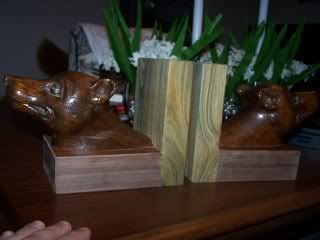
I completed these bookends a while back and have been mulling over an appropriate finish. I wanted to showcase the different woods while still pulling them together a little in color. After several different test pieces I decided I liked the look of amber shellac. More specifically, I liked the waxed shellac since this is also the top coat. I have a can of Bullseye Shellac kicking around from this Arts & Crafts shelf I did last year and it fit the bill perfectly.
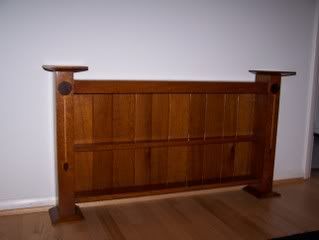

My test pieces looked so good right out of the can that I didn’t even bother to thin the shellac and applied it with a foam brush then went back over with a soft rag to capture some of the inevitable bubbles that form with those foam brushes. It looks great. 2 more coats and I was set.
The next day I went into the shop to get the book ends so my wife could wrap them to give to my father-in-law. As I walked out of the shop into the sunlight I am met with horrible ugly runs and drips that have dried in the most visible part of the piece. AAARGGRHHH!
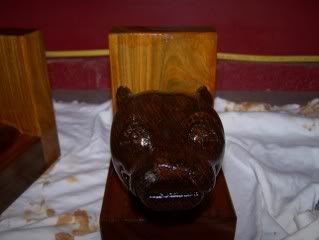

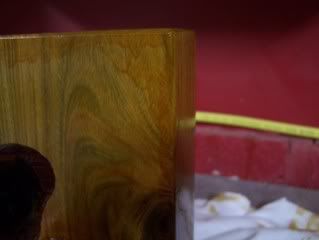
Well we have all heard the maxim that fine woodworking is not so much about the work you turn out but how well you cover your mistakes. I had a few ideas, but before jumping into anything I consulted the experts. The Wood Whisperer, Marc Spagnuolo, came to my rescue and did confirm that alcohal would dissolve my finish, but cautioned me that I might take off more than I had planned. Marc suggested that I use a knife or sandpaper to remove it first and then recoat with a thinner mixture.
So I started in with sandpaper, 320 grit, and it quickly gummed up and was useless. I think the waxed shellac is murder on sandpaper. I sanded and sanded and I wasn’t making a dent on the drips. I admit to being scared to try scraping it with a knife for fear I would scratch the whole thing. Therefore, I am resolved to try a little denatured alcohal and if worse comes to worst I take the whole finish off and start over.
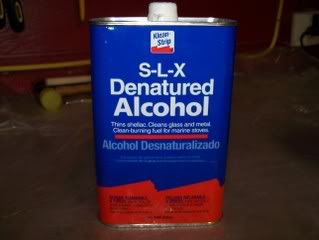
So after rubbing some pure alcohal on the runs I was surprised with how easily it came off. However since this is waxed shellac I have the sneaking suspicion that the wax was staying put and everything else was coming off. There was a definately waxy sheen to the Lignum. So what next. I pulled open a drawer to grab a mallet to secure the lid back on the alcohal when I saw my set of scrapers staring at me. Of course! I had just sharpened a bunch of these after I did the final scraping on the bookends. I have several sizes and shapes including a narrow one that fits perfectly into the gap behind the carving. A few scrapes and I was back to bare wood.
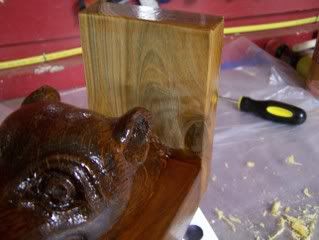
This is what a sharp scraper produces: nice fine shavings!
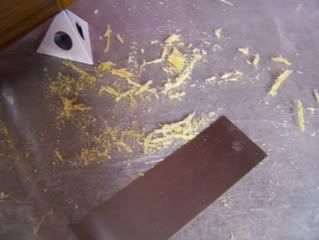
On a side note, you may notice the white pyramid underneath the bookend. I bought these at Rockler during one of their sales. These babies are great for finishing pieces of all sizes and preventing puddles at the bottom of your project.
So I learned from my first attempt that working with this shellac at full strength can build up fast to a nice finish but you have to be careful with controlling it. This time around, I chose the better part of valor and thinned it to about a 1# cut. This time I wiped it on. 3 coats and I am off to the races. I think they came out nicely.
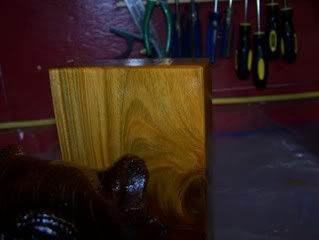
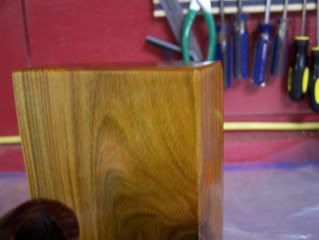

What’s the moral of the story. Take you time and thin your finishes. Personally, the most important thing I learned here is that I need to install some more lights in my shop and possible set up some raking light when I turn to finishing. This problem wouldn’t have happened at all if I had only caught it before it set up. Please post your comments if you have run into this before and how you dealt with it. Any suggestions for lighting out there specific to finishing?


